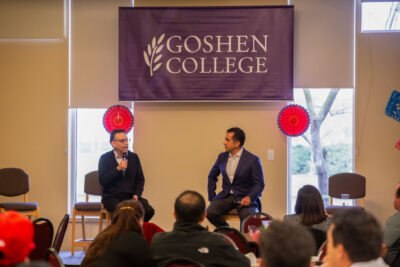Goshen College is in the midst of reaccreditation, a process that evaluates whether GC is still functioning correctly and effectively as an institution.
The Higher Learning Commission (HLC), one of five regional accreditors, works with GC. HLC judges an institution based on certain criteria such as, conformity to federal demands and Assumed Practices and also imposes several Obligations of Affiliation.
The criteria and Assumed Practices cover things like an institution’s commitment to its mission statement, integrity, quality, adequate educational resources, as well as a commitment to evaluation and improvement, financial sustainability and systematic planning.
The Obligations of Affiliation address transparency and also detail the extent of continued contact there should be between the institution and HLC.
GC’s reaccreditation, already three years in the making, happens every 10 years in the form of a comprehensive evaluation.
Scott Barge, director of institutional research, assessment and effectiveness, said, “As an institution, we prepare an extensive self-study document that demonstrates how GC fulfills all of the criteria for accreditation.”
This document, which can be up to 200 pages in length, is accompanied by thousands of pieces of evidence digitally compiled in a database called Alfresco.
As part of the reaccreditation process, GC will revisit its institutional policies and assess how well it meets federal regulations.
“Each academic department conducts a self-study to analyze... how well their students and graduates are achieving the outcomes of the program, and to plan for the future,” Barge said.
Among other things, this involves many surveys and course evaluations.
Goshen switched to a new form of evaluations, the Student Ratings of Instruction system known as IDEA. IDEA determines student progress in various course objectives that are named by the instructor. It then provides the instructor with feedback about which teaching methods worked best for the objectives they want to achieve in each course.
The final component of reaccreditation is a campus observation.
First, GC will send the self-study document with all its evidence to the group of observers. Eight weeks later, a team of faculty and administrators from other colleges and universities will come to visit campus.
“They will meet with many people while here–administrators, faculty, students, alumni, board members, community members, etc.,” Barge said. “They will issue a report on their visit that will guide the HLC in making its decision about our continued accreditation.”
These visitors will be here March 9-11, 2015.
“Accreditation offers us a good framework for thinking about ensuring and advancing quality for our students… The process of preparing for a comprehensive evaluation is an enormous undertaking,” Barge said. “It involves many, many people on campus.”

